Today marks the 272nd anniversary of the Battle of Culloden, which as we all know, effectively ended the Highland way of life in Scotland. This relatively recent (in the big picture) tragedy is commemorated each year in Scotland, and in Nova Scotia, Canada (and possibly elsewhere?). More about that in a minute, but first, some interesting background on life in the Highlands before Culloden…
Excerpts:
“In the 17th century the chief of the clan was both a gentleman and a barbarian. He held his territory by consent of the clan whose members were his tenants, and they gave their loyalty to the chief.
For centuries the sovereign had no authority in the Highlands, and therefore, safe in their mountain fortresses, the clans escaped retribution. This kind of independence led to clan feuds and the consequences were often tragic. Stories abound of jealousies, atrocities, and endless raiding of cattle, goods and women!
The clan system was the basis of highland life. Massacres were commonplace but the one that took place at Glen Coe in 1692 will never be forgotten.
Glen Coe is a valley in the northern part of Bute in Strathclyde. Even today in winter Glen Coe is a bleak place, and it was here in February 1692 that 37 MacDonalds were murdered by their guests, a company of Campbell militia.
An order had gone out to the highland chiefs from King William III that they should take an oath of allegiance to him before 1 January 1692. MacDonald of Glencoe, by accident, came too late to take the oath to the King.
The King became angry and Sir Robert Dalrymple of Stair recommended to him that the MacDonalds should be wiped out for their disobedience. The King agreed.
The Campbells, the MacDonalds’ hereditary enemies, were approached and given the task, and told to ‘put all to the sword that were under 70’.
The Campbells were staying with the MacDonalds, and after a week of apparent friendship, at 5am the Campbells turned on their hosts and massacred them.
Some 37 MacDonalds perished, including the clan chief Alasdair MacDonald, known as MacIain. However, some of the clan managed to escape and report the massacre to the other clans.
To this day the 9 of diamonds in a pack of playing cards is known as the ‘Curse of Scotland’ because the pips on the card bear some resemblance to the arms of the Master of Stair (Robert Dalrymple) who, like William III, bore the greatest responsibility for the slaughter. A further reminder of the massacre, the old Clachaig Inn at Glen Coe still carries the sign on its door, ‘No Campbells’.
The clan system was already dying by the 18th century; it was extraordinary that this ‘tribal’ system had survived so long. The clans lived by the sword and perished by the sword, and the last feeble embers flickered out at the battle of Culloden in 1746.
Even though the clan system has lost the power it had over the years, people still wear the tartan of their clan, usually either a tie or a kilt, to proclaim their pride in their ancestry and in a vanished world.”
Source: www.historicuk.com
Fascinating. An apt description of Jamie, is it not? “…both a gentleman and a barbarian…” – and what I love about him, really. There is something basic there – that appeals to the primitive brain, and let’s face it, to the loins.
I haven’t yet visited Glen Coe, as I know many people have, but when I do, I’ll have this new (to me) information to consider, about what transpired there ?.
In the way of The Outlander Effect, a couple of years ago I happened to meet the daughter of a current clan leader- The MacDougall of Lunga. Fast forward to September of 2017, and I found myself sitting at a dinner party, on the coast of Western Scotland, in a refurbished 400-year-old estate on MacDougall lands, sharing a feast of lobster and crab (plucked from the sea that morning, cooked and prepared ourselves, a first for me), and sharing lively conversation with said Laird.
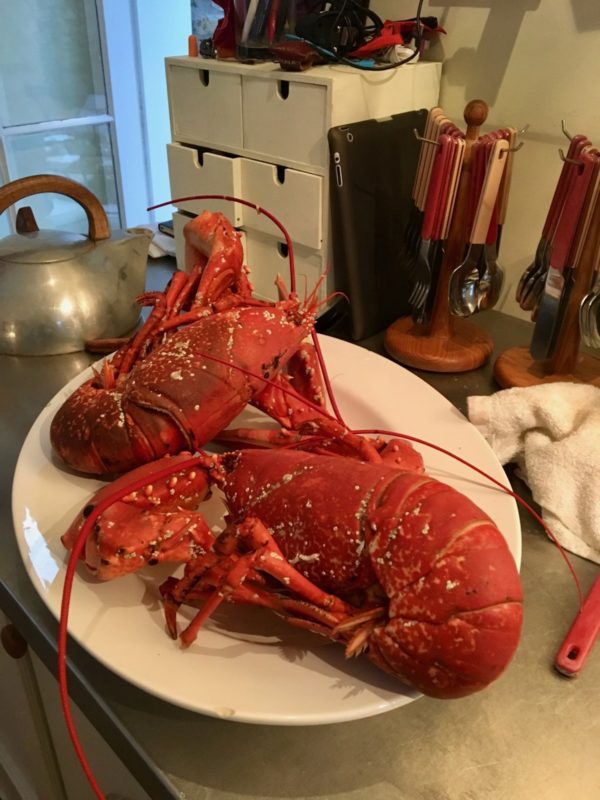
When I first met him, I was shocked by how English he is. Of course I didn’t expect Colum MacKenzie to show up, but I didn’t expect an Englishman either. He explained that when Scotland and England were united to form the Kingdom of Great Britain in the early 1700’s, an agreement was made that all lairds would be sent to the court for formal schooling. Thus, he said, his very Englishness was a common trait among lairds post 1707.
As the rain fell on the glass overhead, we sat in the candlelit converted stables, dining, while the Atlantic raged outside, only a stone’s throw away. It was heaven. For hours, we ate, drank, laughed and conversed: cocktails, appetizers, delicious food, stimulating conversation, whisky, cigars, and chocolate. As I listened to this fascinating man, the theme of his lairdness shone through. He discussed with others at the table how this and that family were doing, who would represent the clan at an upcoming gathering, and the rules of why. It was a lot like Scotland itself, the modern coexisting with the ancient, and forever colored by the English.
As stated in the excerpts above, the Highlands of the 1600’s through the Battle of Culloden, on April 16, 1746, would have been largely unaffected by the sovereign, and thus, the difference in the lairds, I suppose. MacDougall of Lunga’s lands lie just below the Highlands.
On that same trip, Mom and I stayed at Culloden House Hotel, which as many of you know, is just two miles southeast of Culloden Moor.

The original structure has been in place since the 1500’s, and was used by Bonnie Prince Charlie and his Jacobite commanders (then, Culloden Castle), as their headquarters.
Source: Undiscovered Scotland

Very recently, a mass grave was discovered on the premises.
Excerpt:
“History says 16 of Bonnie Prince Charlie’s officers, found hiding in the dungeon at Culloden House, where the prince stayed the night before the battle, were shot by Redcoats and buried by the “Bargas Tree” in the grounds.
The tree – an English Elm, complete with leg and neck irons – is long gone, as is a commemorative 5ft stone with the inscription “Here lie soldiers killed by the English after the Battle of Culloden”.
Only a small grassy knoll remains where the tree once stood.

But now a geophysical survey has shown three pits under the mound.
Robert Cairns, chairman of the Lochaber Archaeological Society, which commissioned the research, said: “We are very excited about the results.”
Mr Cairns made the shock announcement to the secret Jacobite Society, A Circle of Gentlemen, founded in 1747 the year after Culloden, the last battle fought on British soil.
A member of A Circle of Gentlemen, David McGovern, 45, who is also a traditional stone carver from the village of Monikie in Angus, said: “It looks like we have found the martyrs’ graves. History has always said they were buried there but now modern science seems to have confirmed it. We look forward to the results of the dig. This was the first atrocity in what was to become, by all intents and purposes, genocide.”
Source: Express
Just down the road, is the remarkably well preserved Culloden Moor, where the battle took place. Like so much of Scotland, the history lies on the surface, and today’s people live among it. I think this is a big part of what makes Scots who they are; they have reminders of where, and who they come from, everywhere.


There has been a modern day battle going on over whether to build houses around the moor. I heard recently that after losing the first round, the pro housing group is appealing. Take it from an American – keep your treasures! Build elsewhere!
Have any of you been to Culloden Moor and seen the 360 degree video reenactment of the battle? It’s disturbing, heart wrenching. I’ll be honest, I wanted to run out of there! I do recommend it, however.
I found a version of it on youtube, and though it’s not quite like being there, it is upsetting, I’ll warn you…
Commemorative ceremonies took place today, to remember this brutal massacre and the decimation of a way of life…
The Gaelic Society of Inverness host Memorial Service for the 272nd Anniversary of the Battle of Culloden, their piper plays a Lament at the Battlefield Cairn. Jacobite Clan members gather from across the World to remember @CullodenNTS @InverOutlanders @JeSuisPrestNow @Writer_DG pic.twitter.com/ieHY2BLlEL
— Duncan Macpherson (@dmacphers1) April 16, 2018
I was interested to learn that another ceremony takes place, and has for many years now, to remember the battle of Culloden, in Nova Scotia, Canada, and is planned for April 21st this year…
Excerpt:
“‘…The annual ceremony honours that battle – and the subsequent migration of Scots to the shores of Nova Scotia, including along the Northumberland Strait – where the Culloden Memorial Cairn, built in 1938, is located.’ — Organizer Bill McVicar
…The cairn – the centrepiece for the annual celebration… is dedicated to Angus and Hugh MacDonald, and John MacPherson, who fought in the battle for Scotland with the Clan Ranald Regiment.
Dr. Ronald St. John MacDonald of Baileys Brook, with assistance from many local men, fashioned the cairn – the only one of its kind outside Scotland – which includes stones from the Culloden battlefield.
Nestled along the Pictou County roadway, a sign – in both English and Gaelic – welcomes visitors to the historic site.
The most recent addition is a stone… which marks the location for the Mill Brook Pioneer Cemetery, the spot where the three men who fought in the Culloden battle are buried.”
Source: www.ngnews.ca
Here is Outlander’s tribute to the beginning of that momentous hour…
To close, here are some photos shared today by The (one and only) Matthew Roberts. Episode 301 was a beautiful tribute to the battle. Sam’s work was so incredibly moving…
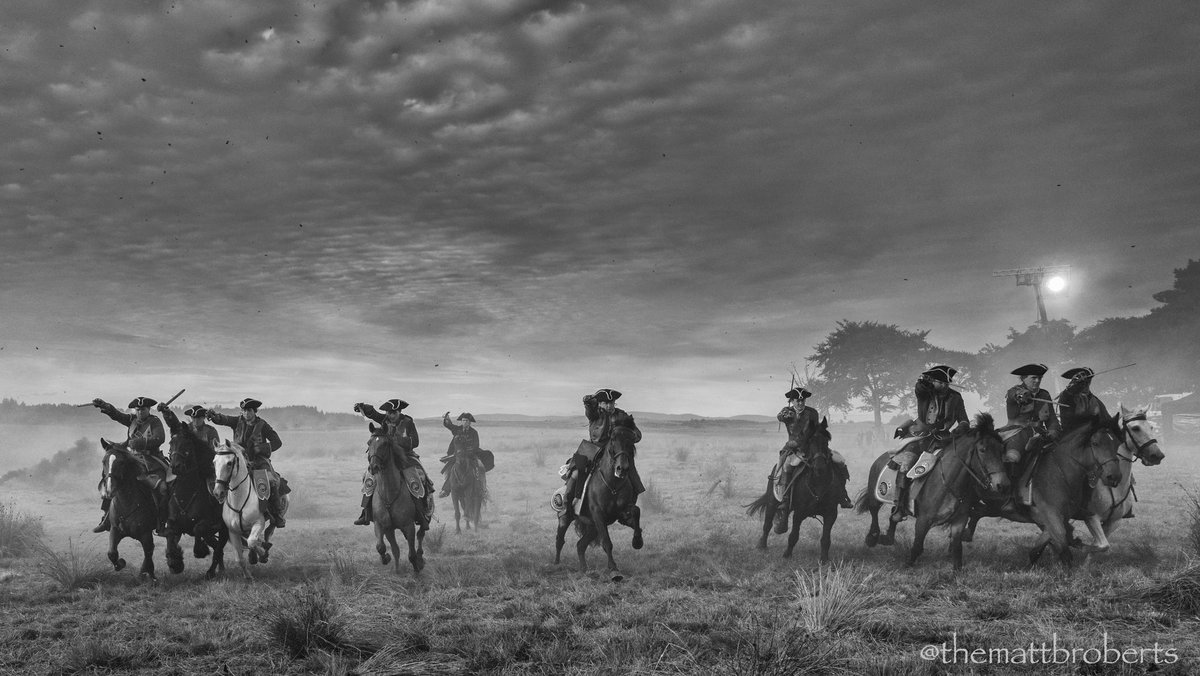
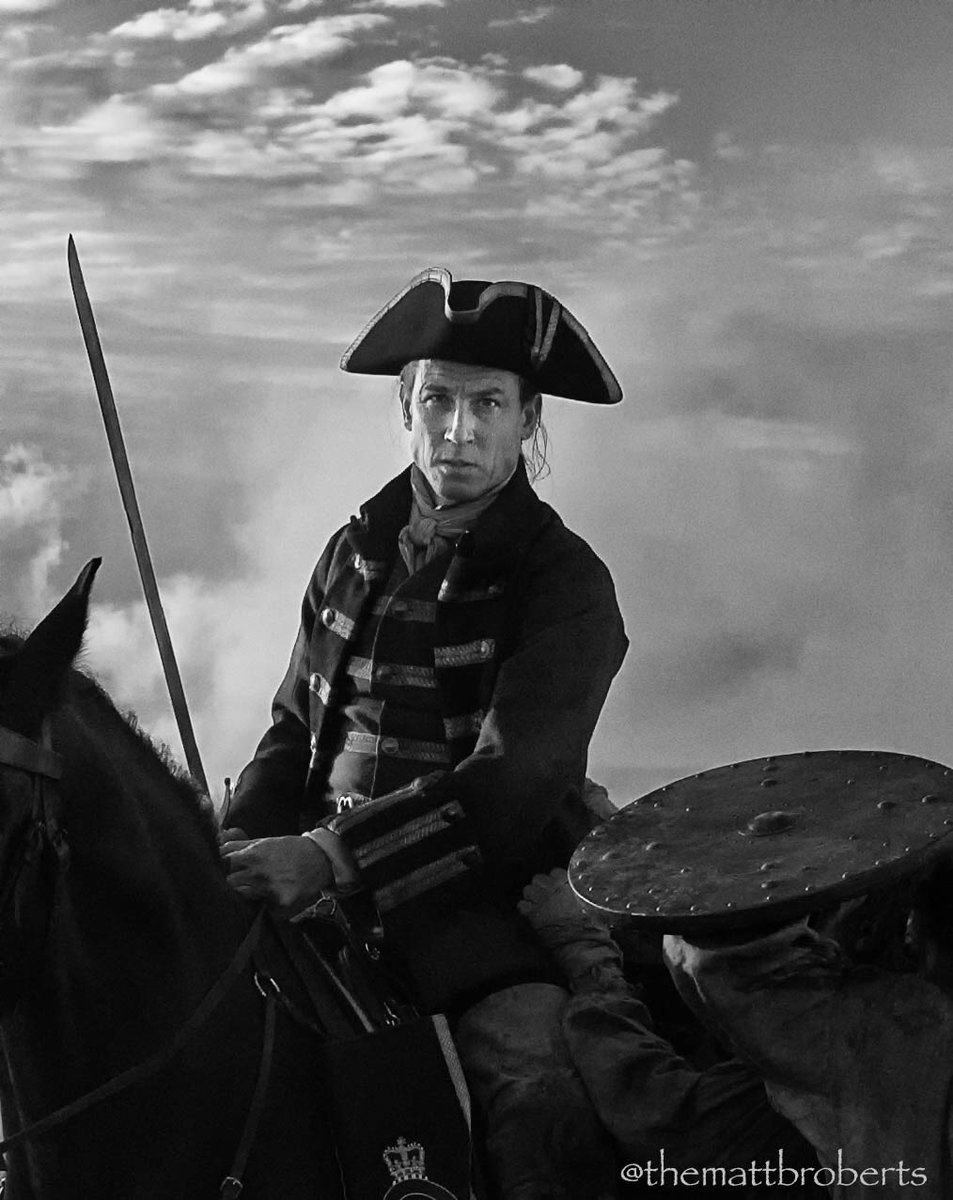
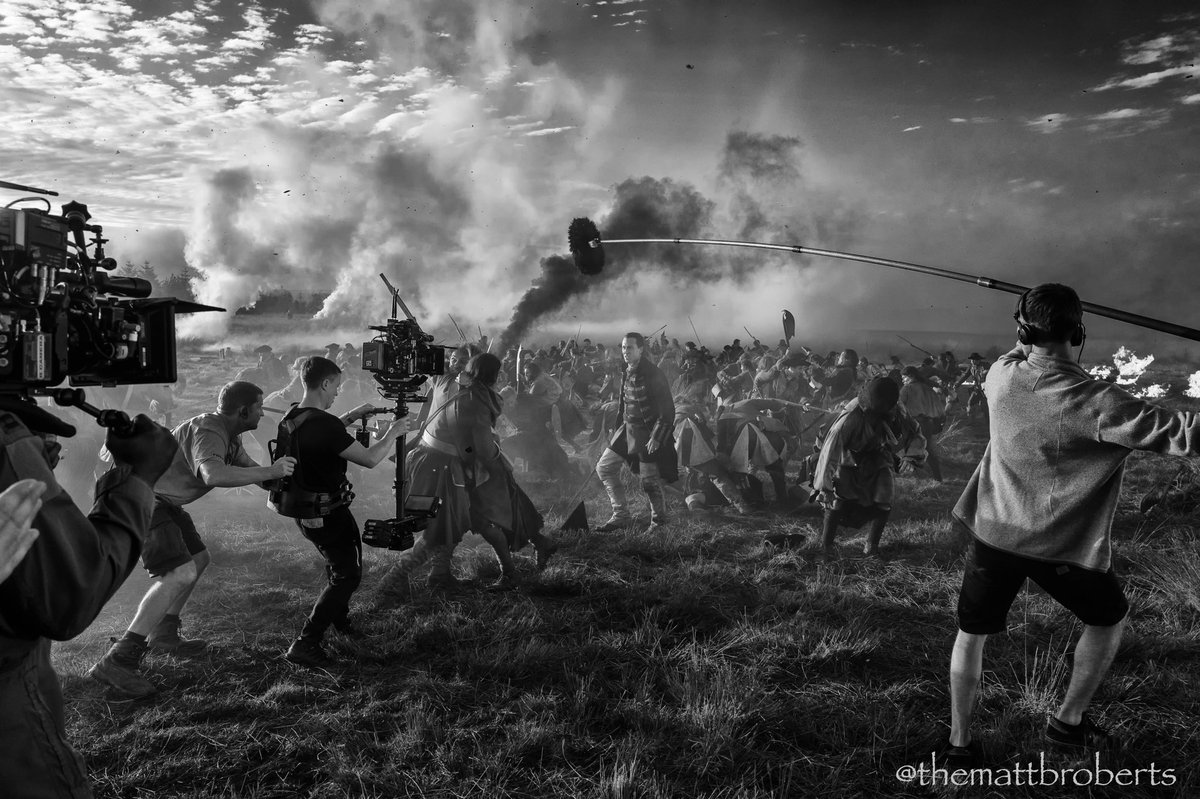
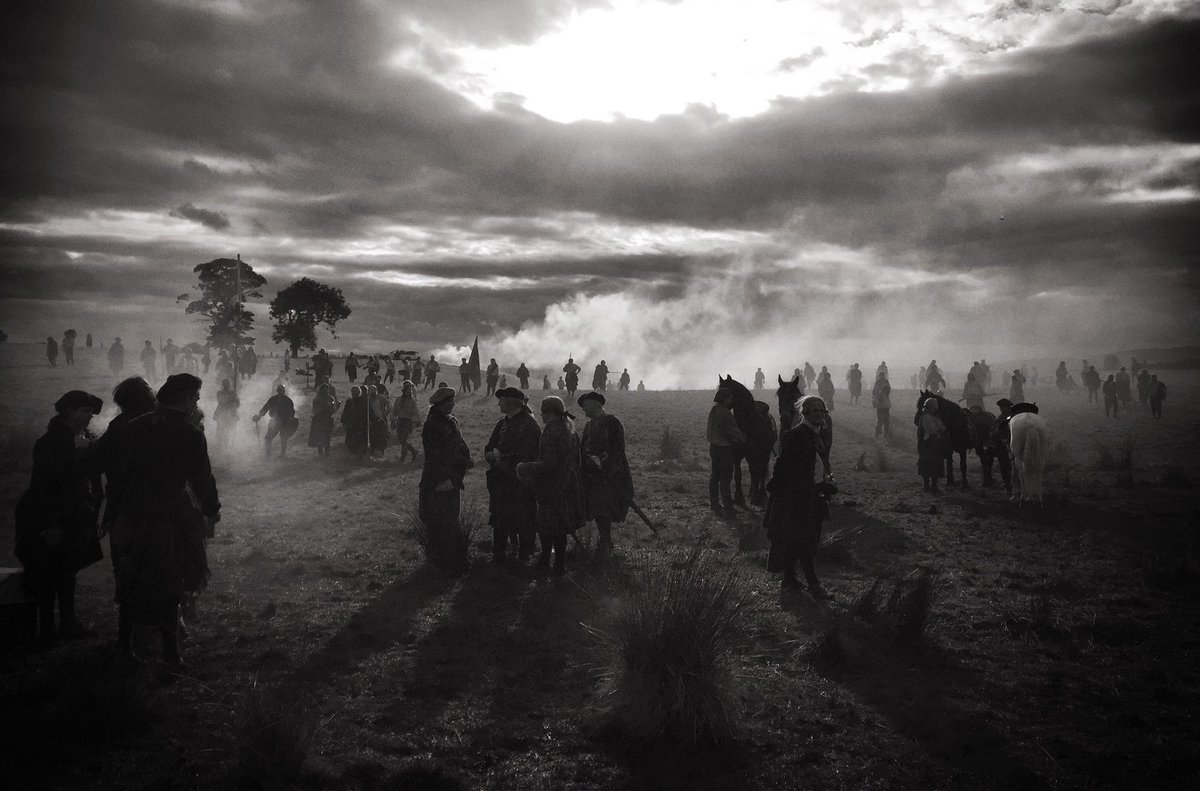
To all the men (and boys) who fought in the Battle of Culloden, the women who supported, and lost them, and the culture that was destroyed – you are remembered.
Here’s to Diana Gabaldon, Ádhamh ÒBroin, the folks at @CullodenNTS, and all those who help to keep not only the memories, but the culture, alive.
Blessings to you. x
For all the latest posts, go to Featured Favorites Section.
Subscribe to receive an email each time I post a new piece: Subscribe
Become an Outlanderbts.com Patron: Patron
Subscribe to my Youtube Channel: Outlander BTS
Join my Facebook group: Outlanderbts.com
Follow me on Twitter: @Courtilini14
Follow me on Instagram: Outlander_BTS


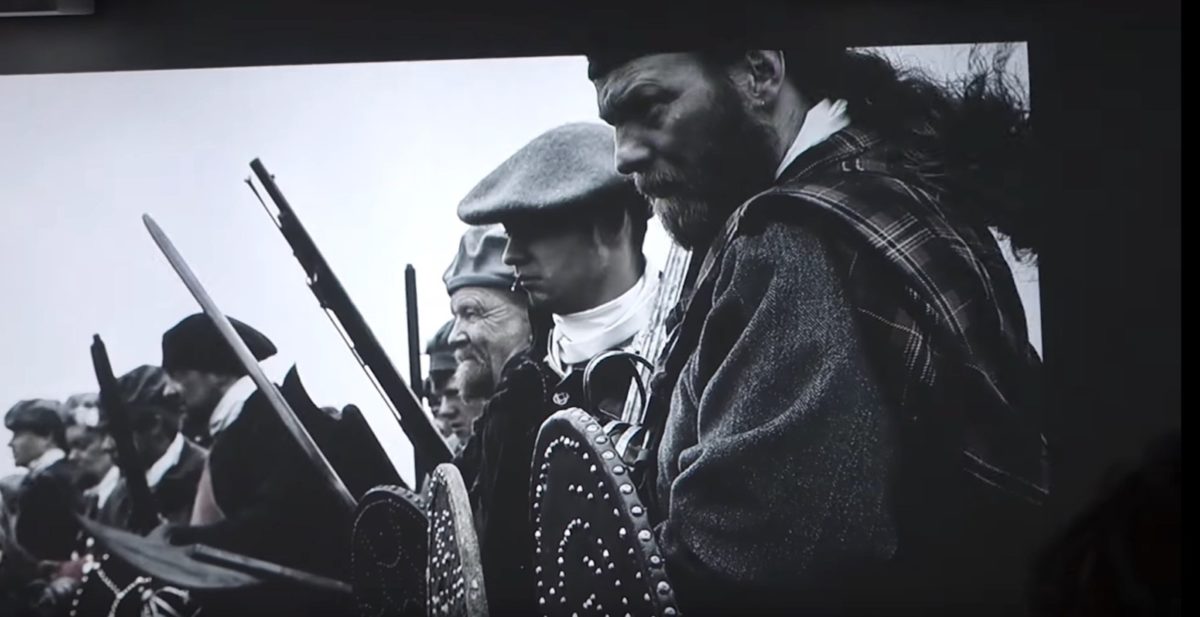

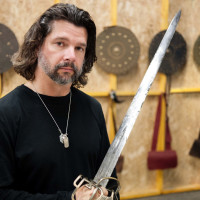
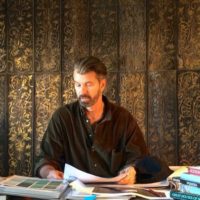
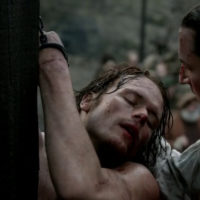


Yes, I have been to the Culloden Moor. Very moving…..the presentation probably the best I have ever seen.
Thank you so much Courtney for the information and for sharing your trip to Scotland and all the photos. Air Canada is offering an affordable package from Toronto to Glasgow and I am seriously thinking of going.
So heartbreaking and tragic. Such a proud people, and yet very warrior like in nature. Culloden Field must be a very sad place. I understand there is was a stone cottage nearby the Culloden field where some of the Jacobite officers hid, being wounded and ill, but they were rounded up by the British and shot. This was played out in Episode 1 of Season 3, where Jamie and Capt. Jack (Black Jack) Randal came face to face for the last time. In 1969, my sister and I had the good fortune to travel to Great Britain and of course Scotland was in the itinerary. I loved Scotland and wish I could visit it again. However, you mention Glen Coe and it is as you say a very sad place. It is lonely, bare and the tragedy done there has left its mark. Not a location you would want to camp out at in the night. The Scottish people have much to be proud of – they are truly survivors. Thank you for all the information above. Yes, Sam Heughan was amazing in his role as Jamie and handled the battle scenes with such emotion and pride of the Scottish people. I truly hope he gets many awards for all his hard work.
Thank you for the brief history lesson.
Hope someday to go to Scotland and visit. I have ancestrys from there.
I was at Culloden last year, and I the experience….both walking through the battlefield and viewing the exhibition were moving and sad. Just a few small decisions made on both sides caused each to experience some victories and tragedies.
I’ve also driven through the Glen Coe area ( my daughter bought me a one-foot-square plot of land) and found it, like most of the Highlands, to be hauntingly beautiful and yet wild and vast.
There is so much I have yet to see, so will make plans to return this year.
Thanks so much for this!
Thank you for this! The article is very well done and the history heart-breaking…as always. I fancy myself a student of history but I certainly don’t know everything! So…thank you, too, for the things I learned.
Outstanding piece! Thank you for the history in which I learned more than I knew and for also bringing your personal experience. You have given much needed perspective for us readers so far down the road in time.
Thank you for this moving article on the 272 anniversary of the Battle of Culloden. It seems unbelievable that the powerful culture and history of the Scots was intended to be wiped out, erased for all time. My American history is also incredibly brutal.
Thank you Courtney, for this lovely and moving remembrance of the battle. I have been to the battlefield and did experience the video reenactment – it was very powerful and almost overwhelming. I love the B&W Matt Roberts photos you included. I think the production team did a magnificent job filming the battle scenes, followed by the scenes in the cottage – it was all heartbreaking. And Glencoe has as much power for me as the stones did for Claire. It’s difficult to find the right words to describe it to someone – hauntingly beautiful, wild, desolate, lonely……………………….I could get lost in it.
Peter Watkins made a film in 1966, in a documentary style, of the battle of Culloden. It is very moving and dispels any romance, showing the battle in all its gory horrible reality.
You can see it on Youtube. Peter Watkins showed us this film in the seventies at The Australian Film and Television School in Sydney where I was a student. It made a big impression because it was so unambiguous and now stood in for all battles in our minds as it was meant to do.
Michele
Just last August, in making my golf pilgrimage to the great Scottish courses, I managed my trip to include three days in Edinburgh, a stay at Culloden House and a visit to the Culloden Battlefield. While I was in Edinburgh, the city was celebrating it’s annual festival. There was an extremely informative Prince Charles exhibit at the Scottish National Museum. I walked the Royal Mile from the Castle to the Holyrood Palace, where the Bonnie Prince wined and dined the locals to join his revolt. And even enjoyed a draft at the “End of the World” Pub.
But what stayed with me long after my visit was that from 1708 to 1747, the Stuarts and Jacobites perpetrated not one, not two but five uprisings, attempting to overthrow the English Kings, resulting in the massacre at Culloden, their permanent exile and the demise of the clans and the Scottish culture. As much as I am enamored by the Scotts, the absolute insanity pursuing the overthrow of the English Kings, defies explanation.
With the forenote that the Outlander series remains king, there is a great novel about the massacre at Glencoe by Susan Fletcher. Depending on what country you live in it is either called Corrag or the Highland Witch. I highly recommend it.
Thank you for the recommendation, Natalie. I just added Corrag to my library. Looking forward to reading it.
A definite must for my library. There is something about Glencoe that is reaching out for understanding of it sadness, haunting history and betrayal. It is a very sad and beautiful place. Thank you, Natalie, for recommending the novel.
A definite must for my library. There is something about Glencoe that is reaching out for understanding of it sadness, haunting history and betrayal. It is a very sad and beautiful place. Thank you, Natalie, for recommending the novel.
I’ve been to Glencoe twice and it is an almost eerie place even on a bright, sunny day. It’s like you can feel the terror and pain of the victims of the massacre even today. The same is true of the battlefield of Culloden. You can’t go there and not be affected by it.
It seems to be what most people feel when they are these two historic places. If you ever go to Virginia – where some of the terrible fights were during the American Civil War – the feeling is the same there. You don’t ever forget the feeling.